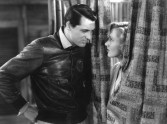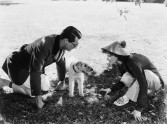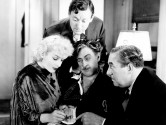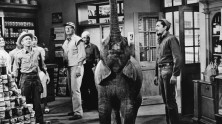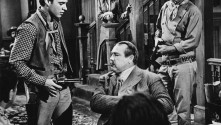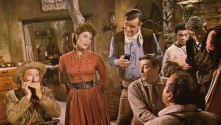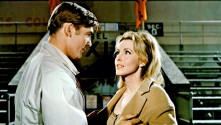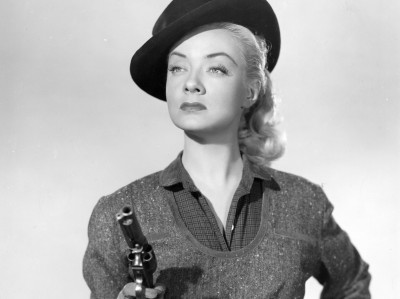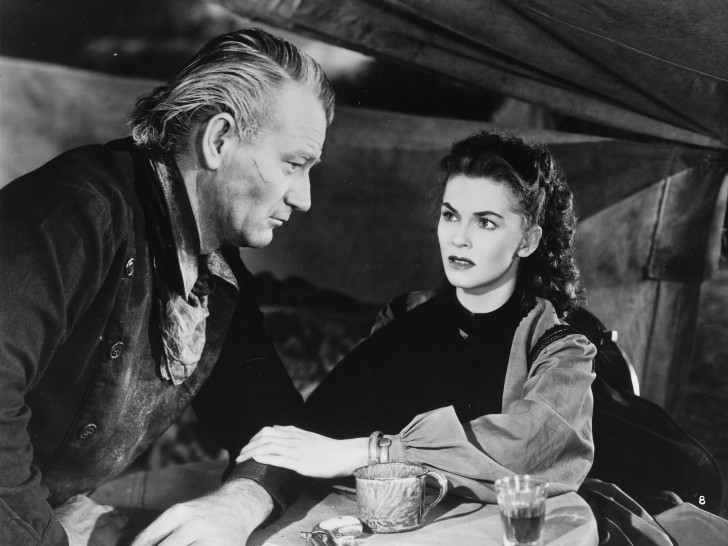
In Red River,Hawks stages a brewing tension between Thomas Dunson (John Wayne) and Matt Garth (Montgomery Clift), an antipathy famously shared by the men playing them. While Wayne was delivering one of his iconic performances in a Western, Clift was making his screen debut, and the tussling that explodes onscreen as the cattle rancher and his protégé embark on a massive pilgrimage to Missouri has occasionally been seen as an allegory for the generational shift developing in Hollywood between old-fashioned stardom and method acting. Whatever extratextual fascination the casting may have, however, cedes the floor to the film itself, a riveting Old West yarn brought to life by some of Hawks’ most muscular filmmaking. Boasting monumentally-scaled sequences of cattle migration across America’s vast heartland, the film is impressively choreographed and visually thrilling, though its dramatic core resides in the passages of downtime when Dunson and his crew set up camp to refuel and plan for the next day’s challenges. It’s here, when Dunson refuses to compromise on his original lucrative plot even in the face of developing obstacles, that the rift with Garth is established, turning the film’s surrogate father-son tale into a study of violently clashing male egos that Hawks nevertheless settles in one of his great tributes to the power of fraternity.
Part of film series
Screenings from this program
Gentlemen Prefer Blondes

His Girl Friday

The Big Sleep (pre-release version)

A Girl in Every Port

The Cradle Snatchers / Paid to Love

Fazil

Fig Leaves

Man's Favorite Sport?

The Crowd Roars

Today We Live


